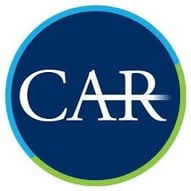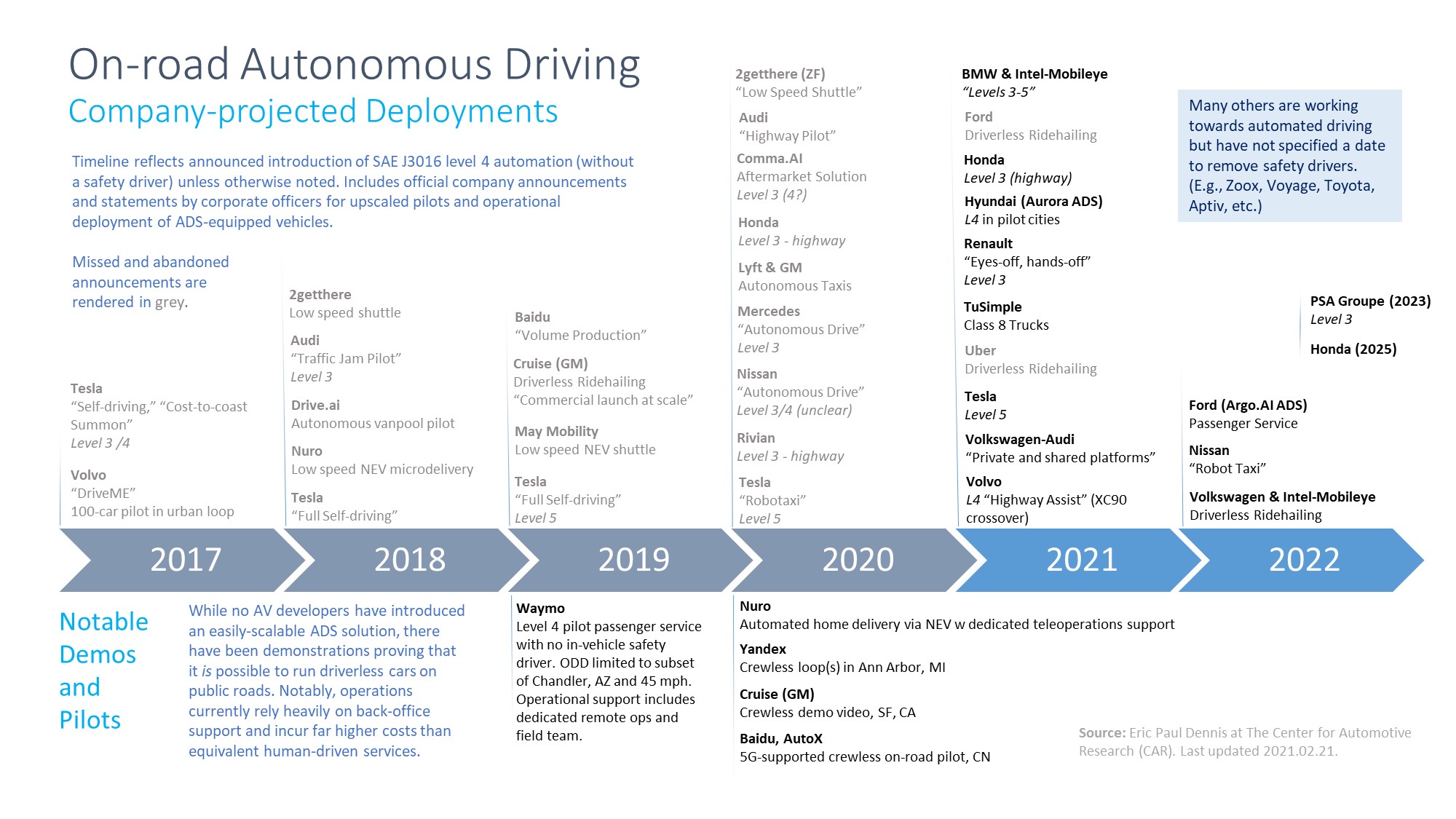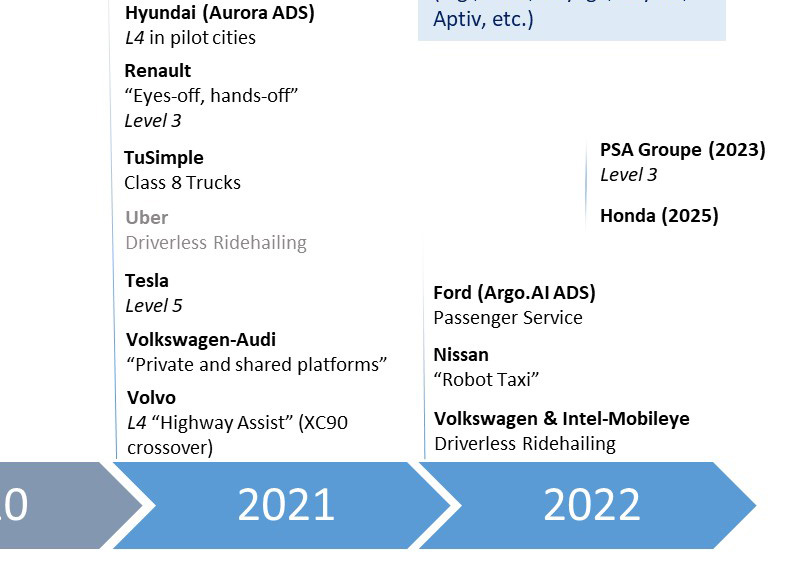
Every year, over the past several years, the automotive industry has made strides towards the realization of automated driving systems.
Through headline announcements and strategic commitments, this progress has naturally generated a lot of buzz in the media. Many companies and stakeholders are excited about the development of these technologies, and have been providing them with substantial attention and investment.
This is a summary of announced autonomous driving deployments, as they may or may-not have been affected by the COVID-19 pandemic. Scheduled targets were specified by official company announcements, indicating each company’s plans towards the successful deployment of a SAE J3016 level (3, 4, or 5) automated driving system. The timeline of events discussed in this summary were gathered by Eric Paul Dennis, Senior Transportation Systems Analyst at the Center for Automotive Research (CAR).
Unfortunately, over the past year, many automotive companies have had to re-prioritize investments and adjust their practices to accommodate the pandemic and future business. In a recent report by CAR; The State of Industry X in Automotive, the team spoke to automakers and vehicle suppliers about their strategies and investments regarding innovative manufacturing processes. About half of the study respondents claimed that the pandemic has actually helped emphasize the value of their digital transformation initiatives. Although these are distinct business areas, CAR believes that both vehicle automation and digital operations will play critical roles in the future of automotive business. Rather than only being an inhibitor, the pandemic may have instead become an opportunity for companies to promote trials and implementations of new technology even further.
On the other hand, there have still been deployment delays which can be attributed to the pandemic. Several companies have announced that they will be postponing launches of automated vehicle services due to customer safety considerations. Additionally, the pandemic had slowed the production capabilities of many automotive stakeholders. It seems that regardless of these companies’ readiness to deploy their automated driving systems and services, they want to ensure the health safety of riders and plant employees. Some other related inhibitors include the reallocation of assets and/or disinvestment from autonomous vehicle R&D and testing. For companies that haven’t made much progress in autonomous vehicle development, it makes sense to forego these activities in the short term.
Over the past year, several startup companies have been navigating the autonomous delivery space. These deployments utilize compact vehicles and are focused on the low-speed transport of goods and products, rather than human-beings. This distinction provides some of these startups with fewer obstacles towards safely deploying and testing their services on public roads. Notably in early 2020, the National Highway Traffic and Safety Administration (NHTSA) granted one of these startups with several exemptions from vehicle safety requirements. Despite this progress, autonomous high-speed passenger vehicles are a different animal, and have many more technical and safety considerations alongside their deployments. With overlapping self-driving capabilities, established OEMs are definitely taking note of these autonomous delivery deployments and may even adjust their timelines, or priorities, accordingly.
Prior to the pandemic (2017-2019), most announced deployments did not actually occur by their targeted date. Therefore, the COVID-19 pandemic should not be recognized as the only inhibitor towards progress in this space. As these companies invest more resources and time into their automated driving systems, they’re becoming better equipped to realistically gauge how long they will actually take to implement, even with unexpected setbacks such as a pandemic. To the companies that are trying their best, a missed “deadline” is just another form of progress.
Only represented here if following conditions apply:
- Promise of deployment (e.g., does not count statements like, “will offer platform…”)
- Official company announcement or statement by corporate officer
- Reference to specific year
- Specified SAE J3016 level 3+ or provides enough detail to be confidently inferred
- Mixed traffic (does not include protected guideways or pedestrian-only zones)
- If level 4/5, no human operator or “safety driver” (in-vehicle or remote)

Emeka Nriagu
Research Analyst
|
















